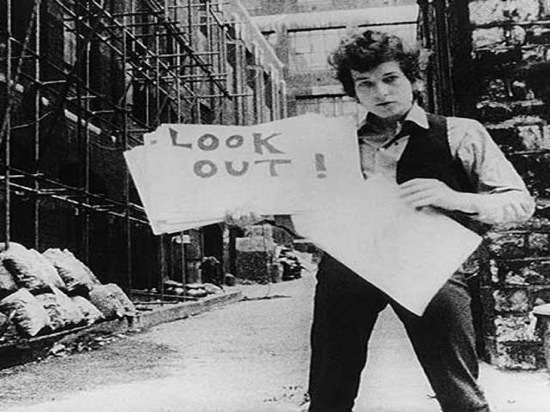Anti-Anti-Utopians: 1934-43
By:
September 30, 2009
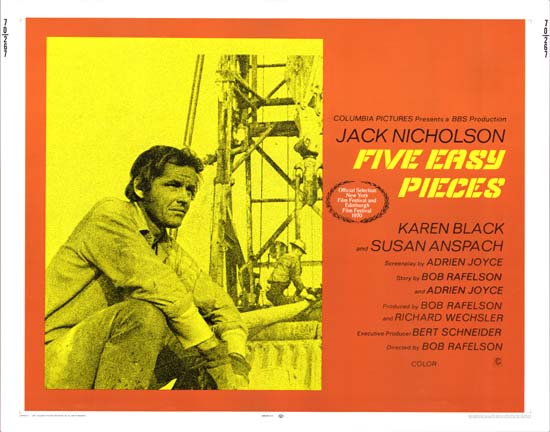
Members of the generational cohort born from 1934-43 were in their teens and 20s during the Fifties (1954-63, not to be confused with the the 1950s), and in their 20s and 30s during the Sixties (1964-73). Though this cohort is easily distinguished from their immediate elders (the Postmodernists, born 1924-33), William Strauss and Neil Howe lumped the two cohorts together and dismissively named them the “Silent Generation” (1925-42).
It’s possible to understand why the 1924–1933 cohort, whose emphasis on the ambivalence, indeterminacy, and undecidability of everything did not lend itself to protesters’ slogans, were considered “silent” by their ideological and gung-ho elders. “Silent,” however, is a laughably wrong-headed descriptor for the 1934-43 cohort — whose number includes Abbie Hoffman, Gloria Steinem, Eldridge Cleaver, Jane Goodall, George Carlin, Richard Pryor, Bob Dylan, Valerie Solanas, Barbara Ehrenreich, Mario Savio, Kate Millett, Vaclav Havel, Stokely Carmichael, Ti-Grace Atkinson, plus honorary members Susan Sontag and Angela Davis. Come on ‚ do you still buy into Strauss & Howe’s generational periodization scheme?
Borrowing Sartre’s slogan, coined after the Soviet invasion of Hungary, about being neither communist nor anticommunist but ”anti-anticommunist,” the American literary theorist Fredric Jameson (born on the cusp of this generation and the Postmodernists) coined the phrase “anti-anti-utopian” to describe the only form of utopianism available after the triumph of anti-utopianism during the early Cold War. Jameson claims that certain SF authors — Philip K. Dick, Ursula K. Le Guin — who belong to what I’ve named the Postmodernist generation are anti-anti-utopians; he also names Samuel R. Delany, who was born in ’42. In honor of Delany, and following Jameson’s productive line of theorizing, I’ve named this generational cohort: the Anti-Anti-Utopians.
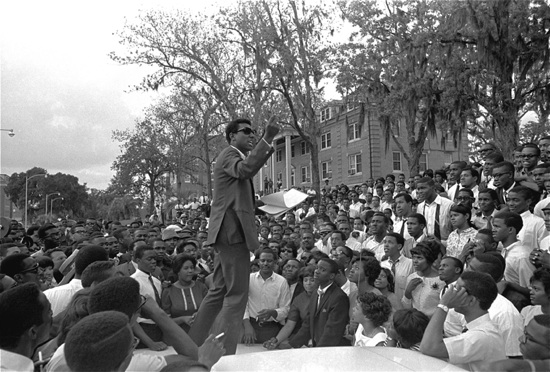
High-, low-, no-, and hilobrow members of the 1934-43 generation include: Abbie Hoffman, Barbara Ehrenreich, Bob Dylan, Brian Wilson, Brigitte Bardot, Bruce Dern, Bruce Lee, Buddy Holly, the Dalai Lama, David Cronenberg, Don DeLillo, Eddie Cochran, Eldridge Cleaver, Elvis Presley, Evel Knievel, Georges Perec, Giorgio Agamben, Hunter S. Thompson, Iain Sinclair, Ian Dury, Jerry Lee Lewis, John Kennedy Toole, John Lennon, Joseph Brodsky, Julia Kristeva, Leonard Cohen, Mama Cass, Margaret Atwood, Michael Moorcock, Michael O’Donoghue, Otis Redding, R. Crumb, Ralph Bakshi, Richard Pryor, Roy Orbison, Samuel R. Delany, Stokely Carmichael, Thomas Pynchon, Tura Satana, Valerie Solanas, Vito Acconci, Vivienne Westwood, Wanda Jackson, Wendell Berry, Woody Allen, and Yvonne Craig. Angela Davis and Yoko Ono are honorary members; and Susan Sontag might be one.
A reminder of my 250-year generational periodization scheme:
1755-64: [Republican Generation] Perfectibilists
1765-74: [Republican, Compromise Generations] Original Romantics
1775-84: [Compromise Generation] Ironic Idealists
1785-94: [Compromise, Transcendental Generations] Original Prometheans
1795-1804: [Transcendental Generation] Monomaniacs
1805-14: [Transcendental Generation] Autotelics
1815-24: [Transcendental, Gilded Generations] Retrogressivists
1825-33: [Gilded Generation] Post-Romantics
1834-43: [Gilded Generation] Original Decadents
1844-53: [Progressive Generation] New Prometheans
1854-63: [Progressive, Missionary Generations] Plutonians
1864-73: [Missionary Generation] Anarcho-Symbolists
1874-83: [Missionary Generation] Psychonauts
1884-93: [Lost Generation] Modernists
1894-1903: [Lost, Greatest/GI Generations] Hardboileds
1904-13: [Greatest/GI Generation] Partisans
1914-23: [Greatest/GI Generation] New Gods
1924-33: [Silent Generation] Postmodernists
1934-43: [Silent Generation] Anti-Anti-Utopians
1944-53: [Boomers] Blank Generation
1954-63: [Boomers] OGXers
1964-73: [Generation X, Thirteenth Generation] Reconstructionists
1974-82: [Generations X, Y] Revivalists
1983-92: [Millennial Generation] Social Darwikians
1993-2002: [Millennials, Generation Z] TBA
LEARN MORE about this periodization scheme | READ ALL generational articles on HiLobrow.

Why does Middlebrow insist on calling the 1934-43 cohort “silent,” despite all evidence to the contrary?
To Middlebrow, there are only two legitimate, and three possible modes of action. It’s legitimate to work contentedly within the status quo — though contentment might involve adjustment, as in: becoming “well-adjusted.” And it’s legitimate to agitate vociferously for reform — i.e., it’s legitimate for a group that’s been denied entrance to the middle class, or denied recognition or respect by mainstream culture, to agitate for membership, recognition, and respect. These legit modes of action are heimlich and gemütlich. Middlebrow also recognizes, and, in a guarded way, applauds a third, unheimlich (nobrow) mode of action: dropping out of the middle class and mainstream culture. The Hardboiled, Partisan, and New God generations aren’t considered “silent” because their notable members tended to adopt one of these three modes of action. Notable Postmodernists, however, regarded this tripartite model as an invisible prison, and themselves as prisoners — sullenly close-mouthed, or sneakily tunneling under the walls.
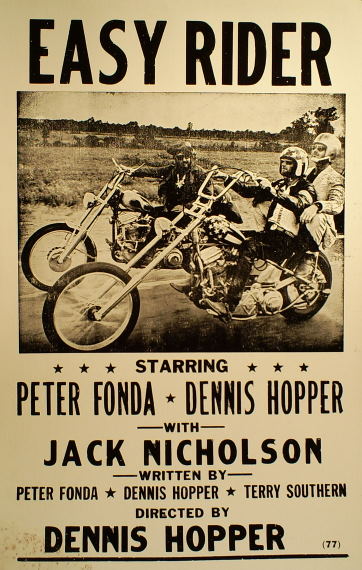
Notable members of the 1934-43 cohort weren’t silent in the same way. Although they agreed with their Partisan, New God, and Postmodernist elders that utopian blueprints are inherently totalitarian, or at least proto-totalitarian, they vociferously and articulately refused to accept the postwar consensus that there was no longer any alternative to liberal capitalism. So were they reformers? Some were, perhaps, but others simultaneously refused to renounce a utopian faith in the possibility of another world. They were neither utopian nor anti-utopian. This double-negative worldview is difficult to articulate, and nearly impossible to translate into action! It’s not as pessimistic a worldview, perhaps, as the Postmodernist vision of the liberal capitalist social order as an invisible prison — but to Partisans and New Gods, it might seem a “silent” one. Middlebrows, of course, call members of this neither-nor generation “silent” because they’d like to muzzle their canniest foes.
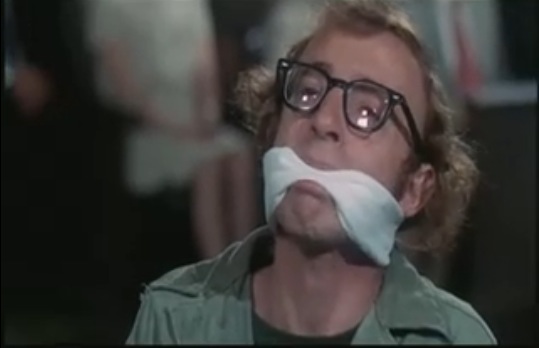
Woody Allen is an avatar of this neither-nor generation, which (most notably during the Sixties) looked upon the competing ideologies and discourses of older and younger generations with a Postmodernist’s detachment, yet which was also ferociously idealistic and outspoken. Allen’s comedies of the Sixties (1964-73), particularly Bananas, Sleeper, and Love and Death, seriously critique the excesses of the Establishment and the revolutionary underground alike. Thomas Pynchon’s entire oeuvre also criticizes both the Establishment and the revolutionary underground, or counterculture.
John Lennon’s “Revolution” also has an idealistic neither-nor message: “When you talk about destruction/Don’t you know that you can count me out (in).” Bob Dylan’s refusal to conform to the New God-era model of a folk singer might be considered an idealistic neither/nor mode of action. Leonard Cohen: “the major fall/the minor lift” is a good encapsulation of anti-anti-utopianism.
Eldridge Cleaver articulated a version of this non-reformist utopianism when he told an interviewer: “I believe that there are two Americas. There is the America of the American dream, and there is the America of the American nightmare. I feel that I am a citizen of the American dream, and that the revolutionary struggle of which I am a part is a struggle against the American nightmare, which is the present reality.”
And then there’s Bruce Lee’s neither-nor fighting style. “Styles require adjustment, partiality, denials, condensation, and a lot of self-justification,” he wrote, in one of his philosophical martial arts treatises. “The man who is really serious, with the urge to find out what truth is, has no style at all. He lives only in what is.”

If Middlebrow is forever working to naturalize the unnatural, eternalize the temporary, and make the contingent seem inevitable, performance art does the opposite. Performance art is an anti-middlebrow artform, one which (in more or less compelling and engaging ways) signals the artist’s rejection of the terms and conditions of modern life by treating everyday reality as though it were theater. Performance art emerged in the Sixties with the work of Postmodernist artists such as Yves Klein, Wolf Vostell, and Allan Kaprow, as well as Anti-Anti-Utopian artists like Vito Acconci (pictured below, in a 1970 performance), Hermann Nitsch, Carolee Schneemann, and honorary Anti-Anti-Utopian Yoko Ono. (Joseph Beuys is a New God, which explains why he fell out with Fluxus, if you ask me; and Chris Burden is Blank Generation.) Gilbert and George are also Anti-Anti-Utopians.

Middlebrows despise performance art, and mock it viciously whenever possible. Two years ago this month, for example, when Star Simpson, an electrical engineering major at MIT, was arrested for innocently walking into Boston’s Logan Airport (where she was meeting her boyfriend’s plane) wearing a sweatshirt adorned with a plastic circuit board on which a handful of glowing green lights in the shape of a star were wired to a 9-volt battery, middlebrow pundits snarkily accused Simpson of the crime of performance art.
The Boston Globe columnist Jeff Jacoby described Simpson’s actions as a “public display,” an “immature stunt,” and a “juvenile prank.” Meanwhile, Boston Herald columnist Howie Carr wrote: “The First Amendment does not give you the right to yell fire in a crowded theater. Or don’t bring what looks like a bomb into Logan Airport….” Carr’s Herald colleage Peter Gelzinis scoffed: “Maybe Star Anna Simpson thought she could saunter through Logan and return to Cambridge with a helluva tale about how no one said a word to her.” The Herald’s Michele McPhee agreed 110%: “There is absolutely nothing artistic about scaring people in public places.”

A blogger at the grassroots-conservative website Free Republic, sarcastically ventriloquizing (nonexistent) supporters of Simpson’s (unintentional) performance art, articulated the anxiety expressed in slightly more subtle ways by these middlebrow critics: “Lighten up! It was performance art, everybody! It was a brilliant illustration of the gestapo tactics of the Bush Administration to any law-abiding citizen strolling through an airport with something that looks like a bomb…. It was a stunning performance and I hope she gets an ‘A.'” Though Simpson wasn’t doing any such thing, middlebrows are apparently so afraid that a performance artist might succeed in waking us up to the possibility of radical change that they responded instinctively with a tsunami of mocking hostility.
Performance art, in which so many (Lennon, Dylan, Cleaver, Hoffman, Kesey, Thompson, Crumb, Pynchon, Solanas, Allen) of our favorite Anti-Anti-Utopians engaged, is — like Dada and Neo-Dada — unheimlich. Whenever possible, Middlebrow seeks to coopt and suborn the unheimlich, transforming it into something cuter and cuddlier: cheese, quatsch. If unable to do so, Middlebrow turns performance art’s japery back on itself, a thousand-fold. Ask yourself why we’ve all been persuaded to hate Yoko Ono — that’s right. She’s anti-middlebrow.
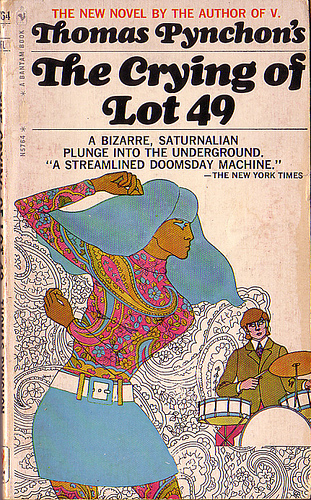
I claimed, above, that Anti-Anti-Utopians are easily distinguishable from their immediate elders, the Postmoderns. But I went on to note that Anti-Anti-Utopians looked upon the competing ideologies and discourses of New Gods, Partisans, and Blanks with a Postmodernist’s detachment. Though certain influential Anti-Anti-Utopians can be called performance artists (whether or not they called themselves that), the performance art of the Sixties was pioneered in part by Postmodernists. So how, exactly, are the Anti-Anti-Utopians distinct, as a generation, from the Postmodernist cohort?
Compare Don DeLillo, Thomas Pynchon, Thomas McGuane, John Kennedy Toole, and Hunter S. Thompson, all of whom were born from 1934-43, to similar novelists from the preceding generation: John Barth, Donald Barthelme, Robert Coover, William Gass, E.L. Doctorow. OK, Barth’s Lost in the Funhouse is pretty amusing, but in general, Anti-Antis are funnier — not less serious, but perhaps less earnest — than Postmodernists. They derive an unseemly amount of anarchistic amusement from the tensions, uncertainties, and paradoxes of postwar American life. It’s for this reason that I’ve named Philip Roth (born in the cusp year 1933) an honorary Anti-Anti.
Anti-Antis didn’t consider themselves postmodern; they were generally less pessimistic than Postmodernists; and even though they were unwilling to articulate what utopia might look like, their anti-anti-utopianism expressed a hopefulness not seen since the Modernists. Speaking of whom, it seems fair to say that Woody Allen rebooted Charlie Chaplin and Groucho Marx; John Lennon and Yoko Ono — Hugo Ball and Emmy Hennings; Michael Moorcock — H.P. Lovecraft; R. Crumb — Henry Miller; Samuel R. Delany and Margaret Atwood — Olaf Stapledon, Karel Čapek, Yevgeny Zamyatin.
Meanwhile, the Yippies (Hoffman), Merry Pranksters (Kesey), even the Beatles (Lennon) can be seen as dissensual organizations of talented misfits — like Dada, or D.H. Lawrence’s plan for the colony of Rananim. Such Argonaut Follies are non-totalizing organizations that serve as inspirations for an un-blueprintable utopian society.
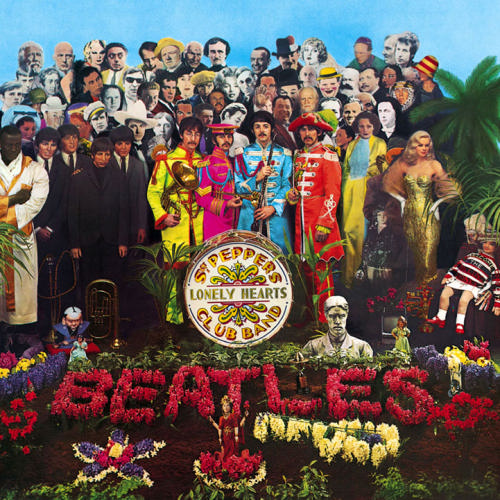
The Sixties (1964-73) belonged to the Anti-Anti-Utopians. When we think of the Sixties, we think of feminists (Gloria Steinem), Yippies (Abbie Hoffman), Black Panthers (Eldridge Cleaver), gentle bearded freaks (Jim Henson) and violent ones (Charles Manson, Theodore Kaczynski), gonzo journalists and far-out novelists (Hunter S. Thompson, Ken Kesey, Don DeLillo, Thomas Pynchon). The Sixties were about the films of Woody Allen; the comedy of George Carlin and Richard Pryor; and the songwriting of Gerry Goffin, Sonny Bono, and Carole King. All of whom were Anti-Anti-Utopians.
Pop music in the Sixties was an Anti-Anti-Utopian thing. That era saw the triumphant comeback of Elvis; the success of soul and funk (Marvin Gaye, Smokey Robinson, Tina Turner, George Clinton, Otis Redding, Aretha Franklin, Curtis Mayfield, Isaac Hayes); and the apotheosis of folk and folk rock (Joan Baez; Bob Dylan; Joni Mitchell; Peter, Paul & Mary; also members of the Mamas and the Papas, Simon and Garfunkel, The Byrds, The Grateful Dead). The world-historical triumph of rock, of course, was also a Sixties phenomenon: Besides the Beatles and the Rolling Stones, members of The Doors, The Velvet Underground, The Beach Boys, and Jefferson Airplane were born from 1934-43; so were Jimi Hendrix, Janis Joplin, Captain Beefheart, and Frank Zappa.
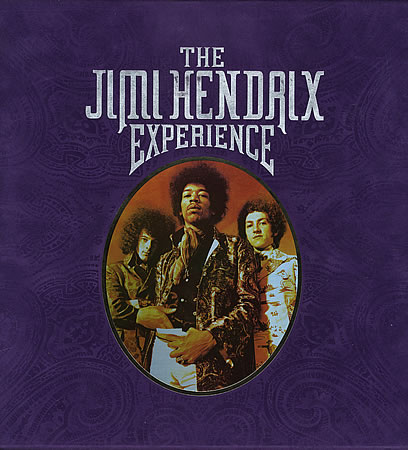
To the extent that the Blank Generation wants to claim the Sixties as its own, it must be replied that they mostly went along for the ride. The modes that we associate with Blanks during the Sixties — i.e., dropping out of the middle class and mainstream culture, or vociferously agitating for reform (as opposed to insisting, anarchistically, that another world is possible) — are ones that Middlebrow encourages and applauds. As for the Blanks’ antiwar activism, well, one of their leaders — John Kerry — was born on the cusp of the two generations. The March on the Pentagon was organized by older pacifists; and Hoffman organized the “levitation” stunt. Also, Blank Generation activism ceased once the draft ended. ‘Nuff said.
Meet the Anti-Anti-Utopians:
HONORARY ANTI-ANTI-UTOPIANS: Philip Roth, Yoko Ono, possibly Susan Sontag (all born 1933).
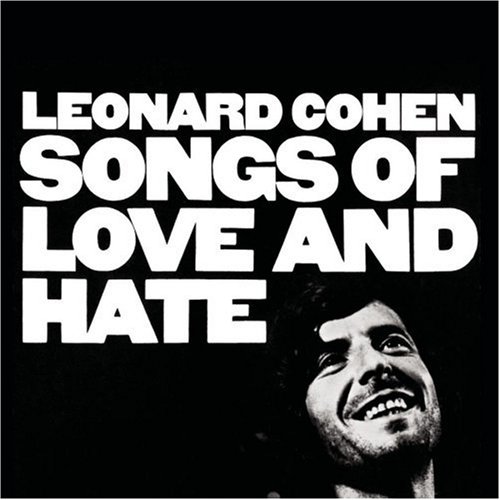
1934: Leonard Cohen (singer/songwriter), Brigitte Bardot (actor, sex symbol), Willie Morris (highbrow Harper’s editor, middlebrow author), Wendell Berry (farmer, theorist), Don Kirshner (mastermind behind The Monkees), Rip Taylor (TV personality), Piers Anthony (goofy SF author), Alan Arkin (actor), Amiri Baraka (Leroi Jones, author), Ted Berrigan (poet), Bill Bixby (played the Incredible Hulk on TV), Judi Dench (actress), Barbara Eden (actor), Brian Epstein (Beatles manager), Yuri Gagarin (cosmonaut), David Halberstam (middlebrow journalist), Florence Henderson (actor), Barry Humphries (actor, Dame Edna), Shirley Jones (actor), Jim Lehrer (middlebrow journalist), Audre Lord (author), Sophia Loren (actor), Tina Louise (Ginger on Gilligan’s Island), Shirley MacLaine (actor), Charles Manson (criminal), Garry Marshall (middlebrow director, Happy Days, Laverne & Shirley), Jackie Mason (comic), Ved Mehta (author), Eugene H. Methvin (middlebrow editor, Reader’s Digest), Kate Millett (feminist activist, Sexual Politics), N. Scott Momaday (author), Robert Moog (invented synthesizer), Bill Moyers (middlebrow journalist), Ralph Nader (activist), Sydney Pollack (director), John Rechy (author, City of Night), Carl Sagan (popular astronomer), George Segal (actor), Maggie Smith (actress), Gloria Steinem (feminist activist, founding editor of Ms. Magazine), Stephan Thernstrom (high-middlebrow historian, neocon ideologue), Frankie Valli (musician), Jackie Wilson (musician), Del Shannon (songwriter), Paul W. MacAvoy (neocon economist). HONORARY POSTMODERNISTS: Ralph Rumney (Situationist), Raoul Vaneigem (Belgian philosopher, Situationist), John Brunner (SF novelist), Harlan Ellison (SF novelist); possibly Joan Didion (journalist and author, Slouching Toward Bethlehem) and Fredric Jameson (theorist, The Political Unconscious).

1935: Elvis Presley (the King of rock’n’roll), Woody Allen (comic, author, director), Dalai Lama (religious leader), Ken Kesey (Merry Prankster, author, One Flew Over the Cuckoo’s Nest), Edward Said (intellectual, Orientalism), Loretta Lynn (country musician), Jerry Lee Lewis (musician), Michael Walzer (philosopher), Oscar Zeta Acosta (attorney, activist, performance artist), Richard Berry (musician, wrote “Louie, Louie”), Richard Brautigan (author), Eldridge Cleaver (activist, author), Tura Satana (actor, Faster, Pussycat! Kill! Kill!), Owsley Stanley (LSD activist), Gene Vincent (musician), Erich von Däniken (crank), Walter De Maria (artist), Herb Alpert (musician), Julie Andrews (actress, singer), Sonny Bono (songwriter, musician), Peter Boyle (actor), Susan Brownmiller (feminist, author), Seymour Cassel (actor), Christo (artist), Robert Conrad (actor), Harry Crews (author), Alain Delon (actor), Bob Denver (played Gilligan on Gilligan’s Isle), Phil Donahue (middlebrow talk show host), Werner Erhard (middlebrow guru, est), Geraldine Ferraro (politician), William Friedkin (director), Charles Grodin (actor), Pete Hamill (journalist), Judd Hirsch (actor), Lewis Lapham (Harper’s editor), David Lodge (author), Dudley Moore (comic actor), John Phillips (musician, The Mamas & The Papas), E. Annie Proulx (middlebrow author), Anne Roiphe (feminist author), Françoise Sagan (author), Robert Silverberg (SF & Fantasy author), Donald Sutherland (actor), Jimmy Swaggart (televangelist), Jack Welch (CEO of GE), William Julius Wilson (sociologist).
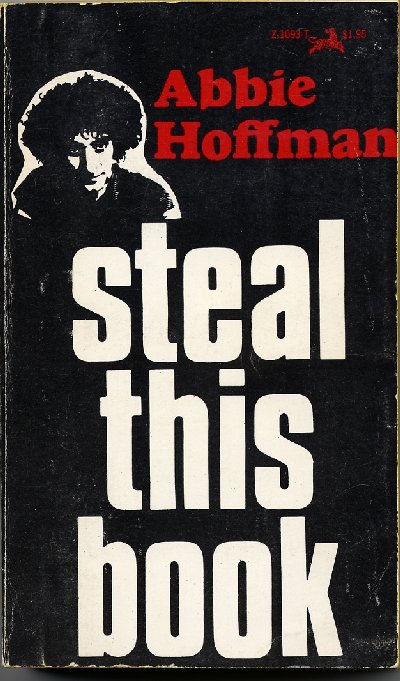
1936: Abbie Hoffman (Yippie, author), Don DeLillo“>Don DeLillo (author, White Noise), Bruce Dern (actor), Carol Gilligan (psychologist, In a Different Voice), Vaclav Havel (playwright, president of Czechoslovakia), Buddy Holly (musician), Roy Orbison (musician), Georges Perec (Oulipo author), Lee “Scratch” Perry (music producer), Valerie Solanas (activist, author, The SCUM Manifesto), Tom T. Hall (country songwriter), Alan Alda (middlebrow actor), Stephen E. Ambrose (historian), Ursula Andress (actor), Jean M. Auel (middlebrow author), Richard Bach (middlebrow author, Jonathan Livingston Seagull), Joe Don Baker (actor), Marion Barry (politician), James Bridges (director), Jim Brown (actor, athlete), Ruth Buzzi (comic), Glen Campbell (Country musician), David Carradine (actor, Kung Fu), Dick Cavett (talk show host), Wilt Chamberlain (athlete), Don Cherry (jazz musician), Bobby Darin (singer, actor), Albert Ayler (jazz saxophonist), A.S. Byatt (author, critic), Troy Donahue (actor), Albert Finney (actor), Al Goldstein (founder of Screw), Jim Henson (middlebrow puppeteer), Dennis Hopper (actor), June Jordan (poet), Philip Kaufman (director), Jonathan Kozol (educator), Kris Kristofferson (actor, Country musician), Ken Loach (director), Larry McMurtry (author), Roger Miller (Country musician), Mary Tyler Moore (actor), Marge Piercy (middlebrow author), Juliet Prowse (dancer), Robert Redford (actor, Sundance Film Festival), Burt Reynolds (actor), Tom Robbins (author), Bobby Seale (activist, cofounded Black Panthers), Ralph Steadman (artist), Frank Stella (Minimalist artist), Dean Stockwell (actor), John McCain (politician), Richard John Neuhaus (neocon priest, First Things), Antonin Scalia (neocon justice).
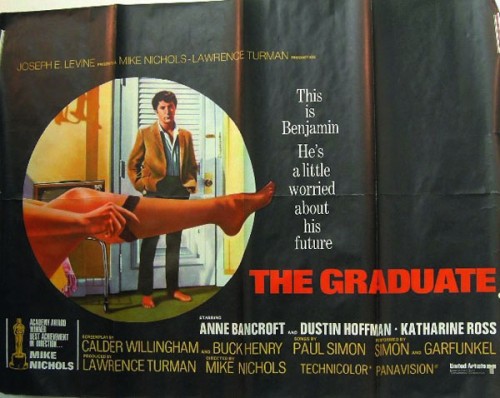
1937: Dustin Hoffman (actor, The Graduate), Thomas Pynchon (author, Gravity’s Rainbow), Hasil Adkins (rockabilly musician), Yvonne Craig (played Batgirl), Wanda Jackson (rock’n’roll singer), Rodd Keith (song-poem composer), Rudy Ray Moore (actor, Dolemite), Thomas Nagel (philosopher), Edward Ruscha (nobrow Pop artist), Robert Stone (author, Dog Soldiers), Tom Stoppard (playwright, Rosencrantz and Guildenstern are Dead), Hunter S. Thompson (gonzo journalist and author, Fear and Loathing in Las Vegas), John Kennedy Toole (author, A Confederacy of Dunces), Ted Nelson (Project Xanadu, first hypertext fiction), Sergio Aragones (MAD cartoonist), Shirley Bassey (singer), Warren Beatty (actor), Dyan Cannon (actor), George Carlin (nobrow comic), Jackie Collins (author), Bill Cosby (comic loved by middlebrows), Dick Dale (surf music guitarist), Robert Downey Sr. (director, Putney Swope), Jane Fonda (actor, Vietnam War protester, pop culture icon), Colin Powell (government), Morgan Freeman (actor loved by middlebrows), Merle Haggard (Country musician), Seymour Hersh (journalist), David Hockney (nobrow Pop artist), Anthony Hopkins (actor loved by middlebrows), Saddam Hussein (despot), Waylon Jennings (Country musician), Marty Krofft (TV and film producer, H.R. Pufnstuf), Lois Lowry (Juvenile SF author), Peter Max (psychedelic artist), Garrett Morris (comic), Jack Nicholson (actor, pop culture icon), Renzo Piano (architect), Ridley Scott (director, Alien), Marlo Thomas (actor), Billy Dee Williams (actor), Roger Zelazny (SF author, Damnation Alley).

1938: Stewart Brand (Merry Prankster, Whole Earth Catalog), Ti-Grace Atkinson (radical feminist), Moebius (Jean Giraud, cartoonist) Ralph Bakshi (cartoonist), Eddie Cochran (musician, “Summertime Blues”), Stanley Fish (literary critic), Evel Knievel (daredevil), Charles Wuorinen (avant-garde composer), Jerry Rubin (Yippie), Hermann Nitsch (performance artist), Renata Adler (journalist), Judy Blume (author), Pat Buchanan (conservative pundit), Raymond Carver (author loved by middlebrows), Alan Dershowitz (lawyer), Bob Eubanks (TV game show host), Sherman Hemsley (George on The Jeffersons), Etta James (singer), Peter Jennings (journalist), Phil Knight (cofounded Nike), Christopher Lloyd (character actor), Ali MacGraw (actor), Bernie Madoff (con artist), Nico (musician), Larry Niven (SF author), Robert Nozick (libertarian philosopher), Joyce Carol Oates (author), Gary Gygax (co-crrator of Dungeons & Dragons), Charley Pride (Country musician), Rex Reed (film critic), Diana Rigg (Mrs. Peel on The Avengers), Kenny Rogers (Country music), Jean Seberg (actor), Charles Simic (poet), Paul Verhoeven (director, Robocop), Jon Voight (actor), Natalie Wood (actor).
1939: Margaret Atwood (SF author), Stew Albert (Yippie), Fritjof Capra (physicist), Wes Craven (director), Tom Hayden (activist, SDS), Michael Moorcock (anti-middlebrow SF/Fantasy author), F. Murray Abraham (played an Abbie Hoffman figure in The Big Fix), George V. Higgins (crime novelist), Carolee Schneemann (performance artist), Ginger Baker (musician), Jim Bakker (televangelist), Peter Bogdanovich (director), Michael Cimino (director), John Cleese (Monty Python), David Frost (journalist), Judy Collins (folk singer), Francis Ford Coppola (director, The Godfather), Margaret Drabble (author), Roberta Flack (singer), Marvin Gaye (singer), George Gilder (technological futurist, high-middlebrow pundit), Germaine Greer (feminist activist), Seamus Heaney (poet), Harvey Keitel (actor), Louise Lasser (actor), Ralph Lauren (fashion designer), Lee Majors (actor), Ray Manzarek (musician, The Doors), Thomas McGuane (author), Sal Mineo (actor), Harvey Pekar (author, American Splendor), Michael J. Pollard (actor), Joel Schumacher (director), Neil Sedaka (singer/songwriter), Grace Slick (singer, Jefferson Airplane/Starship), Dusty Springfield (singer), Lily Tomlin (comic actress), Tina Turner (singer), Joel-Peter Witkin (photographer/artist)

1940: Bruce Lee (actor, martial artist, philosopher), Joseph Brodsky (poet), John Lennon (Beatle), Ringo Starr (Beatle), Gilbert Shelton (cartoonist, Fabulous Furry Freak Brothers), Richard Pryor (comic), Gene Pitney (pop singer), Vito Acconci (perfomance artist), Michael O’Donoghue (comic, National Lampoon, Saturday Night Live), George Romero (director), Frank Zappa (musician), Terry Gilliam (Monty Python, cartoonist, director), Shirley Muldowney (racecar driver), Roger Ailes (CEO, Fox News), Dario Argento (director), Frankie Avalon (singer, actor), Russell Banks (author), Tom Brokaw (TV journalist), James Caan (actor), Angela Carter (author), George Clinton (musician), Brian De Palma (director), Peter Fonda (actor, pop culture icon), Herbie Hancock (jazz musician), Tom Jones (singer), Raul Julia (actor), Anna Karina (actor), Jorma Kaukonen (musician), Maxine Hong Kingston (author), Ted Koppel (TV journalist), Chuck Norris (actor), Phil Ochs (singer/songwriter), Abbas Kiarostami (director), Al Pacino (actor), Smokey Robinson (singer), Pharoah Sanders (jazz saxophonist), Martin Sheen (actor), Nancy Sinatra (singer), Phil Spector (music producer), Norman Spinrad (SF author), Patrick Stewart (actor), Alex Trebek (gameshow host), Raquel Welch (actress), Edmund White (author), Morris Dickstein (historian, critic), James L. Brooks (director, producer), Bruce Chatwin (travel writer).
1941: Stokely Carmichael (activist), Mama Cass (singer), Alexander Cockburn (columnist, The Nation), Bob Dylan (musician), Donella Meadows (environmentalist), Barbara Ehrenreich (activist author), Stephen Jay Gould (evolutionary biologist), Tony Hendra (comic, National Lampoon), Julia Kristeva (poststructuralist philosopher, psychoanalyst), Hayao Miyazaki (anime director), Daniel Pinkwater (anarchistic author of juvenile lit), Otis Redding (singer/songwriter), Maurice White (singer), Vivienne Westwood (fashion designer), Graham Chapman (Monty Python), Aldrich Ames (spy), Ann-Margret (actor), Michael Apted (director), Joan Baez (singer), Captain Beefheart (musician), Gregory Benford (physicist, SF author), Bernardo Bertolucci (director), Lester Bowie (jazz trumpeter), Ed Bradley (TV journalist), Beau Bridges (actor), John Brockman (editor of Edge.org), Eric Burdon (musician), Chubby Checker (singer), Dick Cheney (politician), Lynne Cheney (Dick Cheney’s wife, neocon, NEH), Chick Corea (jazz keyboardist), David Crosby (musician), Desmond Dekker (musician), Dr. Demento (novelty DJ), Neil Diamond (singer/songwriter), Faye Dunaway (actor), Nora Ephron (middlebrow author, director), Stephen Frears (director), Art Garfunkel (musician), Spalding Gray (monologist beloved of middlebrows), Robert Hass (poet), David Hemmings (actor), Jesse Jackson (activist), Krzysztof Kieslowski (director), Mike Love (Beach Boys), Harry Nilsson (singer/songwriter), Nick Nolte (actor), Ryan O’Neal (actor), Richard Perle (neocon, “Prince of Darkness,” Project for a New American Century), James Woolsey (neocon, CIA director), James P. Hoffa (labor leader, neocon), Wolfgang Petersen (director), Wilson Pickett (singer/songwriter), Anne Rice (middlebrow horror author), Paul Theroux (novelist), Anne Tyler (author), Ritchie Valens (musician), Bors Vallejo (fantasy artist), Charlie Watts (Rolling Stones), George Will (neocon), Chuck Woolery (game show host), Samuel Zell (billionaire), Michael Ledeen (neoconservative activist), Richard Dawkins (biologist), Paul Simon (middlebrow musician).

1942: Samuel R. Delany (SF author), Paul McCartney (Beatle), Giorgio Agamben“>Giorgio Agamben (philosopher), Daniel Dennett (philosopher), Chris Miller (National Lampoon, Animal House), John Crowley (author, Little, Big), Bernardine Dohrn (activist, Weather Underground), Ian Dury (musician), Lou Reed (Velvet Underground), Gloria Anzaldua (author), Martin Scorsese (director), Gayatri Spivak (postcolonial theorist), Brian Wilson (Beach Boys), Terry Jones (Monty Python), Robert Christgau (rock critic), Barry McCaffrey (neocon), David Gergen (neocon columnist, presidential advisor), Muhammad Ali (boxer), Isabel Allende (author), Tammy Faye Bakker (televangelist), Marty Balin (Jefferson Airplane), Karen Black (actor), John Cale (Velvet Underground, producer), C.J. Cherryh (SF author), Michael Crichton (middlebrow thriller author), Sandra Dee (actor), Roger Ebert (film critic), Michael Eisner (low-middlebrow CEO, Disney), Mick Fleetwood (Fleetwood Mac), Larry Flynt (publisher, Hustler), Harrison Ford (actor), Aretha Franklin (singer), Annette Funicello (actor), Jerry Garcia (Grateful Dead), Peter Greenaway (director), Barry Hannah (author), Stephen Hawking (physicist), Isaac Hayes (musician), Jimi Hendrix (musician), Werner Herzog (director), John Irving (middlebrow author), Brian Jones (Rolling Stones), Erica Jong (author), Ted Kaczynski (criminal), Madeline Kahn (actor), Garrison Keillor (middlebrow radio personality), Carole King (singer/songwriter), Calvin Klein (fashion designer), Barry Levinson (director), Penny Marshall (Laverne and Shirley), Curtis Mayfield (musician), Country Joe McDonald (musician), Roger McGuinn (The Byrds), Graham Nash (musician), Mike Nesmith (The Monkees), Huey Newton (activist), Tom Peters (management guru), Robert Quine (punk guitarist), Richard Roundtree (actor), Mario Savio (activist, Free Speech Movement), Barbara Streisand (actor), Andy Summers (The Police), Peter Tork (The Monkees), Gabriele Veneziano (physicist, string theory), Andrew Weil (New Age guru), Paul Weyrich (conservative activist), Tammy Wynette (Country musician), Steve Wynn (middlebrow Las Vegas billionaire).
1943: R. Crumb (cartoonist), George Harrison (Beatle), David Cronenberg (director), Iain Sinclair (psychogeographer), Friedrich Kittler (literary scholar, media theorist), Joseph E. Stiglitz (economist), Michael Palin (Monty Python), Eric Idle (Monty Python), Newt Gingrich (neocon), Charles Murray (neocon author, The Bell Curve), Frederick Barthelme (author), Steven Bochco (TV director), H. Rap Brown (activist), Nolan Bushnell (co-founded Atari, founded Chuck E. Cheese), Peter Carey (author), Larry Clark (photographer, director), Robert De Niro (actor), Catherine Deneuve (actor), John Denver (musician), Bobby Fischer (chess player), Nikki Giovanni (poet), Louise Glüick (poet), Doris Kearns Goodwin (historian), Hendrik Hertzberg (New Yorker), Mick Jagger (Rolling Stones), Terrence Malick (director), Barry Manilow (singer-songwriter), Michael Mann (director), Malcolm McDowell (actor), Christine McVie (Fleetwood Mac), Steve Miller (musician), Joni Mitchell (singer-songwriter), Jim Morrison (The Doors), Randy Newman (songwriter), Oliver North (neocon), Joe Pesci (actor), Keith Richards (Rolling Stones), Geraldo Rivera (TV journalist), Cokie Roberts (TV journalist), Edie Sedgwick (Warhol factory girl), Ronnie Spector (singer), R.L. Stine (juvenile horror author), Sharon Tate (actor), Christopher Walken (actor), Roger Waters (Pink Floyd), Paul Wolfowitz (neocon). HONORARY BLANK GENERATION: Chevy Chase (comic), Todd Gitlin (activist), Don Novello (comic), Michael Ondaatje (author), Harry Shearer (comic, actor), Sam Shepard (playwright, actor), John Kerry (antiwar activist, politician), George W.S. Trow (author, social critic), David Denby (middlebrow film critic).
HONORARY ANTI-ANTI-UTOPIANS: Angela Davis (activist, scholar), Sly Stone (musician), Martin Jay (intellectual historian), Bill Griffith (cartoonist), Jonathan Demme (director), Patti LaBelle (soul singer-songwriter), maybe Rem Koolhaas (architect) (all born 1944).
READ MORE essays by Joshua Glenn, originally published in: THE BAFFLER | BOSTON GLOBE IDEAS | BRAINIAC | CABINET | FEED | HERMENAUT | HILOBROW | HILOBROW: GENERATIONS | HILOBROW: RADIUM AGE SCIENCE FICTION | HILOBROW: SHOCKING BLOCKING | THE IDLER | IO9 | N+1 | NEW YORK TIMES BOOK REVIEW | SEMIONAUT | SLATE
Joshua Glenn’s books include UNBORED: THE ESSENTIAL FIELD GUIDE TO SERIOUS FUN (with Elizabeth Foy Larsen); and SIGNIFICANT OBJECTS: 100 EXTRAORDINARY STORIES ABOUT ORDINARY THINGS (with Rob Walker).
